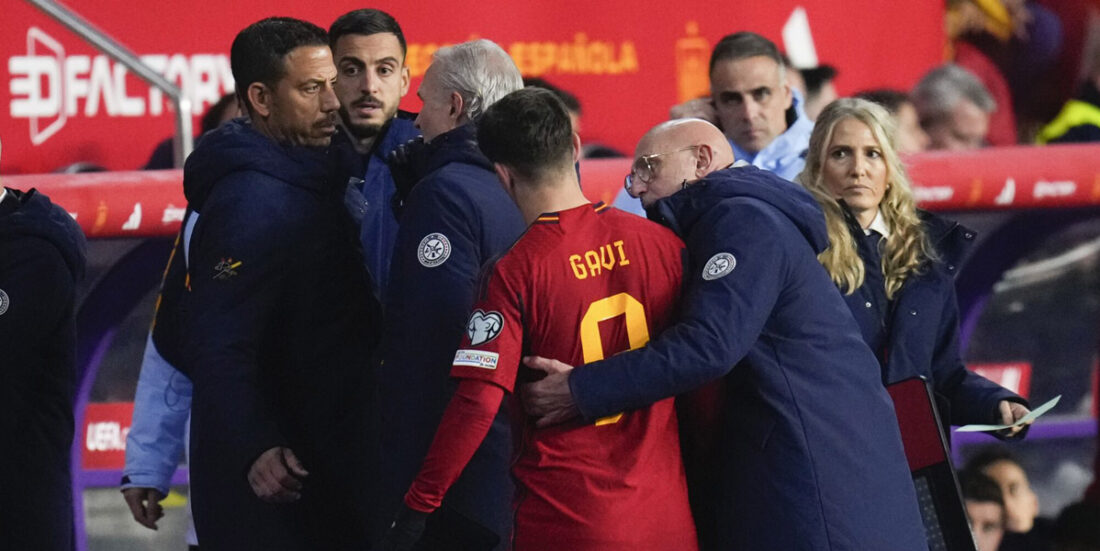Football may become the game where everyone loses
Match load in international football is becoming so high that it is threatening the health of our players. So much so, that the product itself may also be under threat.
Forcing more and more fixtures into their tournaments seems to have developed into a contest in which the international football associations UEFA and FIFA are constantly trying to out-do each other. This is a worrying development.
Not least because this fixture inflation is being introduced on top of the ever-increasing physical demands placed on the top players. For example, sprinting distances per match have increased by 35 per cent during the last ten years. Such demands increase the need for adequate recovery between matches.
Instead, however, we are seeing increases in the number of matches that footballers have to play.
More and more hamstring injuries
In the last ten years, hamstring muscle injuries have increased both in terms of occurrence, levels of severity and re-injury rates (when a new injury is suffered in the same muscle within a period of two months). There are probably many reasons for this. However, it is likely that the two most important factors are increased match load, combined with the increasing physical demands placed on players.
They are burning the candle at both ends.
For this reason, there is a real danger that everyone will end up as losers in the circus that international football has now become.
- Players will become losers: Last season set a new standard for match loads experienced by the top male players. The players’ organisation FIFPro is now expressing its concern for its members’ mental and physical health. And how do repeated injuries impact on the careers of players who are out of action for prolonged periods?
- Supporters will lose out: For how long and how often will you as a supporter continue to sit and watch your favourite team if your favourite player is on the sidelines? Perhaps you notice that the opposing team also has two of its biggest stars injured and out action until next season? If this continues, how attractive will it be for you to continue as a football fan?
- UEFA and FIFA will be losers in the long term: It isn’t difficult to understand why the two associations want to increase the number of fixtures. More matches mean more money in their pockets, at least in the short term. However, if the injury issue only leads to undermining supporters’ interest in the game, UEFA and FIFA will also become losers in the long term.
90 matches per season
Naturally enough, both individual clubs and national teams want their best players on the pitch as often as possible. For the top male players this may mean playing up to 90 matches in a season. If this trend continues, it will not be many years before we see the first player completing his one-hundredth match in a single season.
Last year was an exception – with the World Cup in Qatar taking place in the middle of the most hectic period of the European season.
However, already this season, players are being exposed to approximately the same level of match exposure. The trend is clear for everyone to see – the number of fixtures is constantly on the increase.
Starting next season, there are plans to expand the Champions League, increasing the number of matches by one third. The World Club Championship will be expanded significantly, starting in 2025. And in 2026, the same will apply to the World Cup.
- Read also: Why we need biofuels
Too few days to recover
As researchers into match load and football-related injuries, we have up to now been preoccupied mainly with the term ‘match or fixture congestion’, which can be used to describe periods in which an especially high number of matches are scheduled.
Traditionally, we have measured fixture congestion by counting the number of individual periods in which only five days or less are available to players for recovery between matches.
However, this year we have had to discard this use of this term because now that footballers are playing as many as 70 matches in a season, it is the case that more than 50 matches are taking place with five or fewer days in between for recovery.
In practice, this means that the entire season can now be described as ‘congested’ – in other words, virtually a continuous period of fixture overload.
Superstar with a long-term injury
The time has now come to ask ourselves the following questions: How many matches can players reasonably be expected to play in a given season? And how many matches can they be expected to play over many seasons? And last, but not least, how many matches over an entire career?
Barcelona’s superstar Pablo Gavi, with almost 6,000 minutes of playing time behind him during the last 12 months, is among those players with the highest levels of match exposure.
Since match-related injuries are reported to occur up to 55 times per 1000 hours of playing time, Gavi must expect to suffer about five injuries purely as a result of his match exposure.
In November last year, Gavi suffered a cruciate ligament and cartilage injury that will keep him on the sidelines for a year.
Half a tournament?
My own research, and the literature as a whole, demonstrates that we cannot definitively identify a cause-and-effect relation between individual injuries and match schedules. However, it is clear that the current increase in fixtures will exacerbate injury problems at group level.
This will have a profound impact on player health, but I am also concerned that it will damage the product.
As we all know, the European Championships will be held next year without Norway taking part. They will also take place without Pablo Gavi. Perhaps there will be other superstars forced to sit on the sidelines?
In the same way as ticket sales at Ullevaal (Norway’s national stadium in Oslo) rise and fall depending on whether or not Erling Braut Haaland is injury free, perhaps a European Championships without many of the top players will be perceived as only half a tournament?
No-one is listening
Therefore, in my opinion, both UEFA and FIFA will benefit from a fixture scheduling system that allows players adequate time to recover. This will also enable players to maintain a higher tempo on the pitch, resulting in better quality matches.
It will also be better for player health. A more sensible match load will enable us to prevent both damage to the product and injury to players.
But what do the players themselves think about this? The players’ organisation FIFPro says that it regards the current trend as madness, but that no-one is listening.
Paradoxically, it appears that the only match that players are not allowed to participate in is the battle for their own health.
This feature article was first published in the newspaper VG on 7 December 2023 and is reproduced here with the permission of the paper.





